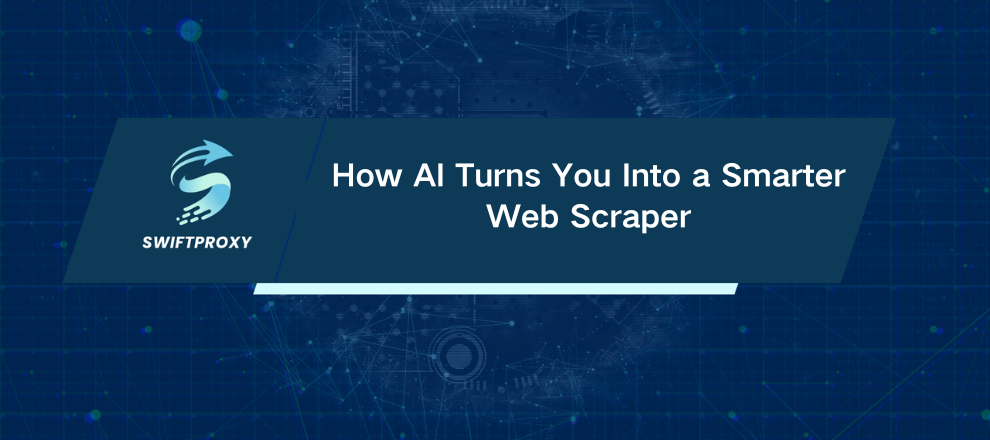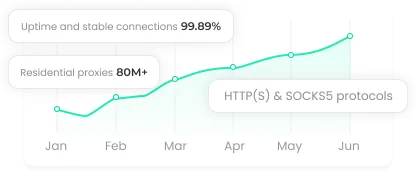How AI Turns You Into a Smarter Web Scraper
When automation is applied to an effective process, it enhances efficiency, whereas applying it to a flawed process only increases inefficiency. This concept is particularly relevant to web scraping. AI tools like ChatGPT are not intended to replace humans but to amplify productivity. Yet, can a tool that produces Python scripts in seconds really take the place of hours of manual coding? Let’s take a closer look. Web scraping has traditionally been a task for seasoned developers. You needed coding chops, debugging patience, and an eye for detail. One missed semicolon, and your scraper collapses. Enter ChatGPT. Suddenly, even a beginner can produce a functioning script in minutes. Professionals? They save hours by letting AI handle repetitive coding chores. Rather than replacing humans, AI becomes a productivity multiplier. Web scraping isn’t just a developer’s toy. Researchers can collect datasets faster, businesses can monitor competitors in real-time, and students can learn Python in a hands-on way. Pair Ch

The Tools You Need to Start Scraping
Before diving in, make sure your toolkit is ready:
1. Visual Studio Code (or any code editor)
Download VS Code, install the Python extension, and open your project folder. Create a new Python file—something like scraping_gpt_test.py. Done? Perfect.
2. Python + Libraries
Install Python 3.x. Then, add essential libraries:
pip install requests beautifulsoup4
These handle HTTP requests and HTML parsing. Simple, yet powerful.
3. ChatGPT Account
You'll use it to write, debug, and improve your scraping scripts. Free or paid works—the choice is yours.
4. Proxies
Proxies prevent IP blocks and keep scraping smooth. Grab credentials from your proxy dashboard.
5. Target Website
For this tutorial, we're scraping Wikipedia's list of countries by population. Always check the site's robots.txt and terms of service—scraping ethically is non-negotiable.
Can ChatGPT Actually Write Python Scraping Code
Let's test it.
Inspect the Page
Right-click the element you want (e.g., a country name or population) → Inspect → Copy the CSS selector.
Craft a Clear Prompt
Include the URL, CSS selectors, libraries, and mention proxies and headers—just don't share credentials.
For example, you could create a Python scraper using Requests and BeautifulSoup to extract countries and their populations from Wikipedia, utilize proxies and headers, output the results to a CSV file, and clean any unwanted symbols from the data.
Run the Script
Paste ChatGPT's response into VS Code and run it. Add retry logic, time.sleep() delays, and User-Agent headers to handle rate limits and avoid blocks.
The terminal will run, the CSV will be generated, the data will be structured, and the task will be complete.
Common Scraping Issues And How to Fix Them
Scraping isn't always smooth. Expect bumps:
403 Errors: Add headers and proxies to mimic a real browser.
Blocked IPs/Rate Limits: Residential or mobile proxies help avoid detection.
Timeouts: Use time.sleep() between requests. Implement retry logic.
Broken CSS Selectors: Websites change layouts; re-inspect elements when needed.
Messy Data: Clean output in Python before saving to CSV. Remove special characters, trim spaces, fix formatting.
The Future of AI-Assisted Scraping
AI isn't replacing developers—it's amplifying them. It handles repetitive coding, speeds up script generation, and offers solutions for common errors. Professionals can focus on analysis, not copy-pasting HTML. But balance is key.
Responsible scraping still matters. Use proxies, respect rate limits, and follow websites' rules. Done right, AI-assisted scraping is faster, safer, and smarter than ever.
The Bottom Line
With ChatGPT + Python, scraping isn't magic—it's efficiency amplified. Beginners can start immediately. Experts can reclaim hours of manual work. And ethical practices ensure you stay on the right side of the web.

















































